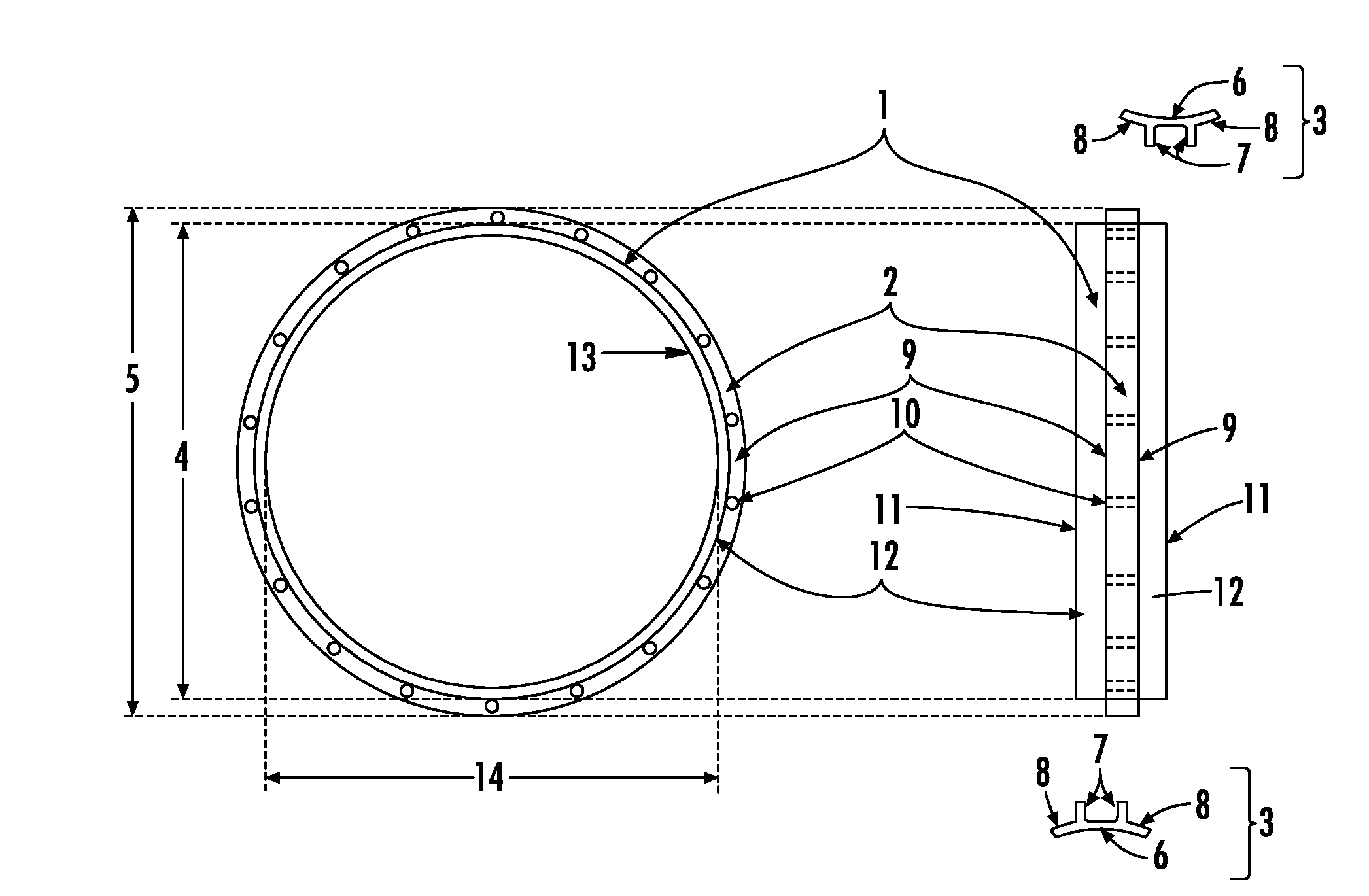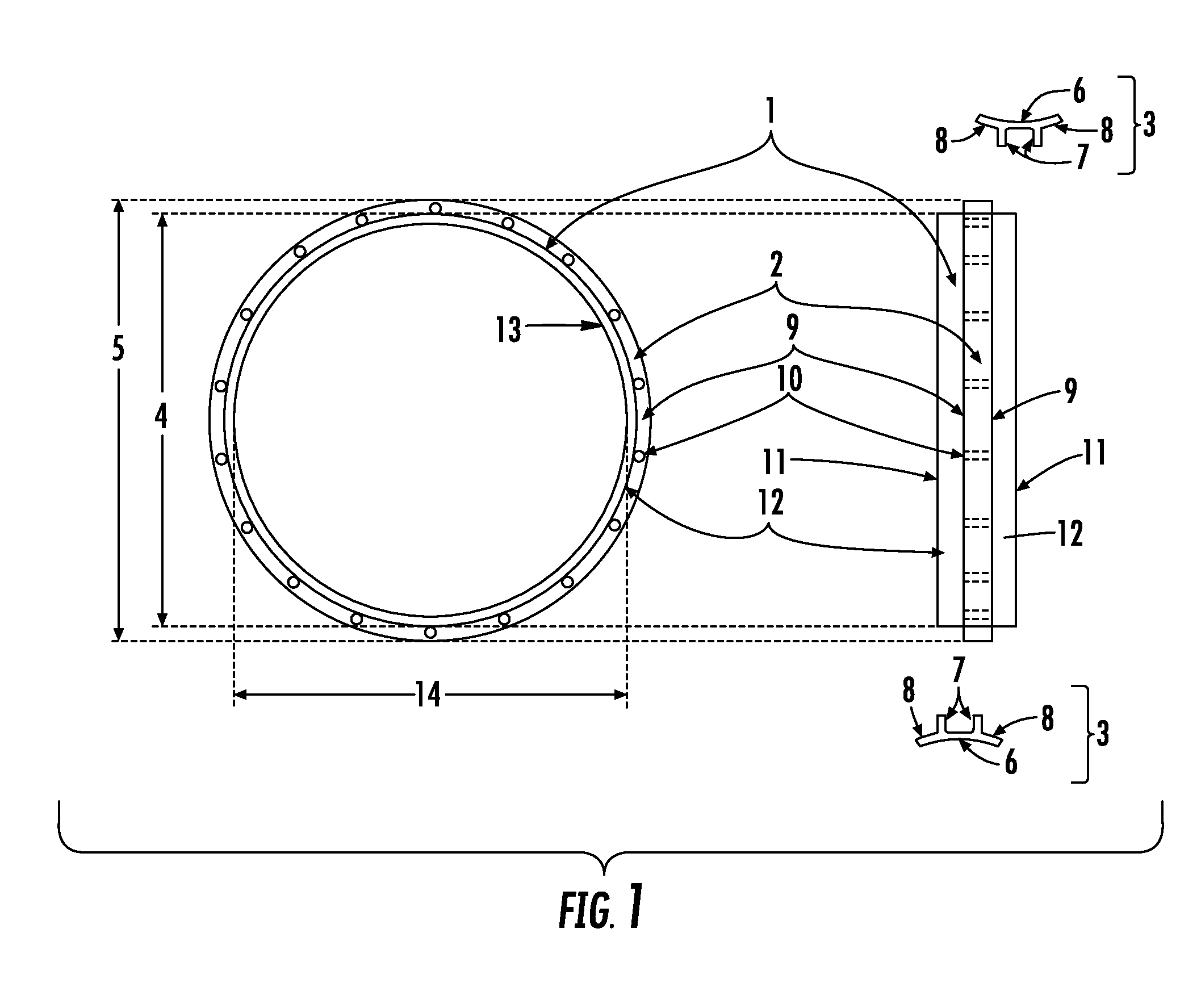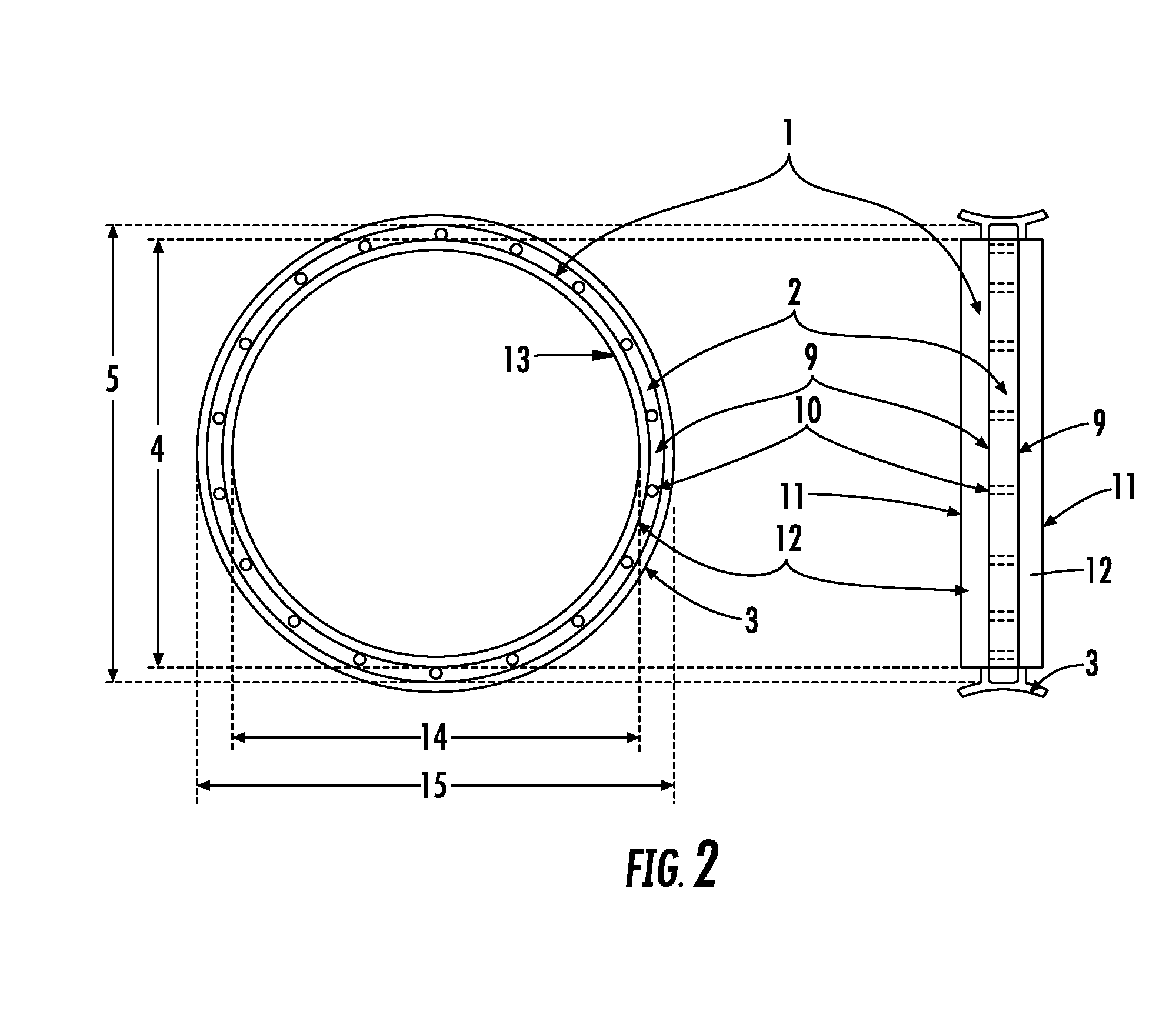Implantable mechanical heart valve assembly
a heart valve and implantable technology, applied in the field of mechanical heart valves, can solve the problems of increasing the gradient of the valve, reducing the available internal orifice area, and unable to effectively reduce the bulk of the sewing ring, so as to reduce the inadequacies and complications.
- Summary
- Abstract
- Description
- Claims
- Application Information
AI Technical Summary
Benefits of technology
Problems solved by technology
Method used
Image
Examples
Embodiment Construction
[0050]The valve body is generally in the shape of a ring or tube having an interior surface, an exterior surface and two ends. The occluder or the valve leaflets which are engaged in the interior surface of the valve body form no part of the present invention and are included for the better understanding of the invention. The preferred embodiment comprises forming a suture ring as portion of the valve body and having an implantation flap assembly.
[0051]The suture ring created on the exterior surface of the valve body along with the implantation flap assembly is adapted to engage and / or secure the valve body with the heart valve annulus. A plurality of pre-fabricated suture tunnels of an axial orientation is formed on the suture ring portion of the valve body through which the surgeon inserts the sutures. In one embodiment a knit fabric implantation flap assembly attached to the valve body surrounding the suture ring fits over an outer surface of the heart valve. The invention is dir...
PUM
 Login to View More
Login to View More Abstract
Description
Claims
Application Information
 Login to View More
Login to View More - R&D
- Intellectual Property
- Life Sciences
- Materials
- Tech Scout
- Unparalleled Data Quality
- Higher Quality Content
- 60% Fewer Hallucinations
Browse by: Latest US Patents, China's latest patents, Technical Efficacy Thesaurus, Application Domain, Technology Topic, Popular Technical Reports.
© 2025 PatSnap. All rights reserved.Legal|Privacy policy|Modern Slavery Act Transparency Statement|Sitemap|About US| Contact US: help@patsnap.com



